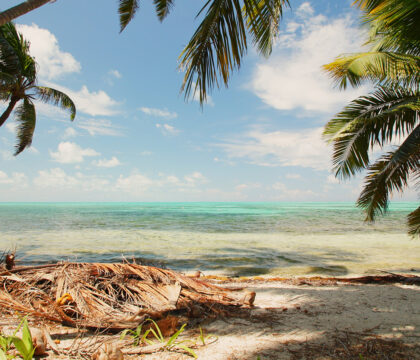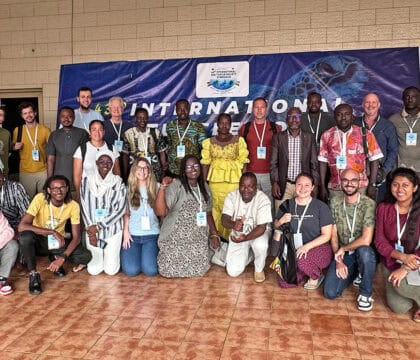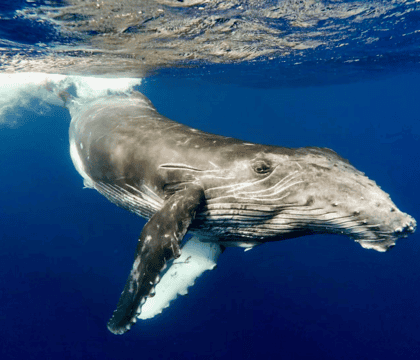February 3, 2025 • News Announcements
We are proud to announce that Oceanic Society has awarded 20 small grants to sea turtle conservation projects in Colombia, Ecuador, Indonesia, Kenya, Mexico, Nicaragua, Nigeria, the Phillippines, the Republic of the Congo, the U.S.A., and Venezuela. The grants were made as part of our State of the World’s Sea Turtles (SWOT) Program, a global effort to support and strengthen local sea turtle conservation.
Since 2006, the SWOT Program’s small grants have helped field-based partners worldwide to accomplish important sea turtle research and conservation goals. To date, 180 grants have been awarded to 135 applicants in more than 57 countries and territories. The grants awarded in 2024 were made possible through generous support from the Moore Family Foundation, Seiko, and the AZA-SAFE program, as described below.
For the sixth consecutive year, SWOT partnered with the Association of Zoos and Aquariums (AZA) and its Sea Turtle SAFE (Saving Animals from Extinction) Program to make 12 additional grants for projects related to the conservation of two of the top global priorities for sea turtle conservation—eastern Pacific leatherbacks and Kemp’s ridley turtles. Those grantees are marked with a (*) on the list below.
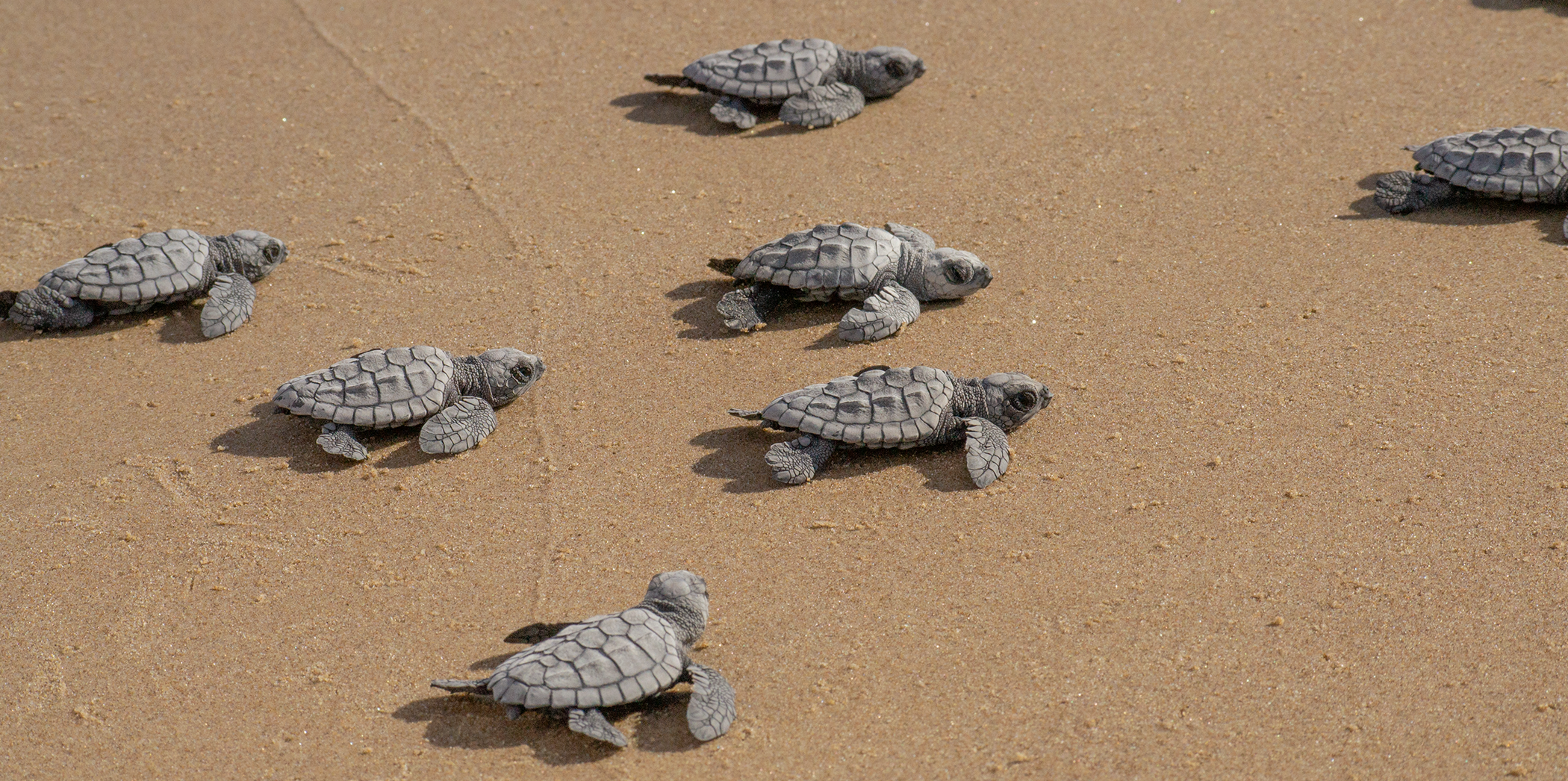
The crawl from nest to ocean is important for sea turtles as they calibrate their orientation and warm up their muscles.
Marine Science Department, Khairun University (Indonesia) will implement multimedia educational activities and public awareness campaigns to protect sea turtles that nest on Ternate Island (North Maluku Islands) by discouraging egg harvesting, reducing plastic pollution, and promoting conservation efforts among students and the public.
The Olive Ridley Project (Kenya) will conduct a pilot study with eight fishers from a fishing community in Kwale County, providing them with LED lights to attach to their nets to assess their effectiveness in reducing sea turtle bycatch without affecting target catch. The findings will be shared with fellow fishers, community members, and relevant stakeholders to encourage the adoption of bycatch mitigation measures throughout the region.

The Olive Ridley Project works with community members and fishers in Kenya to promote pro-sea turtle behaviors.
CURMA (Philippines) has led conservation efforts in La Union, Philippines, since 2009. With support from a 2024 SWOT grant, CURMA plans to expand its network by training over 100 sea turtle patrollers and 50 youth ambassadors. They will also collaborate with national projects to create a benchmark program, enhancing nationwide sea turtle protection and fostering long-term community involvement.
Brendan Hurley (International) will develop a GIS-based framework and lead training workshops to empower local conservation managers in northwestern Africa to update and refine spatial sea turtle data, with the ultimate goal of identifying Important Marine Turtle Areas (IMTAs) in the region. This project will also foster collaboration through a transnational network, enhancing communication and unifying data collection and conservation strategies across northwestern Africa.
Institut Congolais pour la Conservation de la Nature (ICCN) (Republic of the Congo) has operated a hatchery and recruited eco-guards from local communities to monitor beaches, collect eggs, and oversee the hatchery, resulting in reduced pressure from egg harvesting and coastal erosion. Their SWOT grant will support the compensation of eco-guards and staff responsible for beach monitoring, data collection, and hatchery supervision.
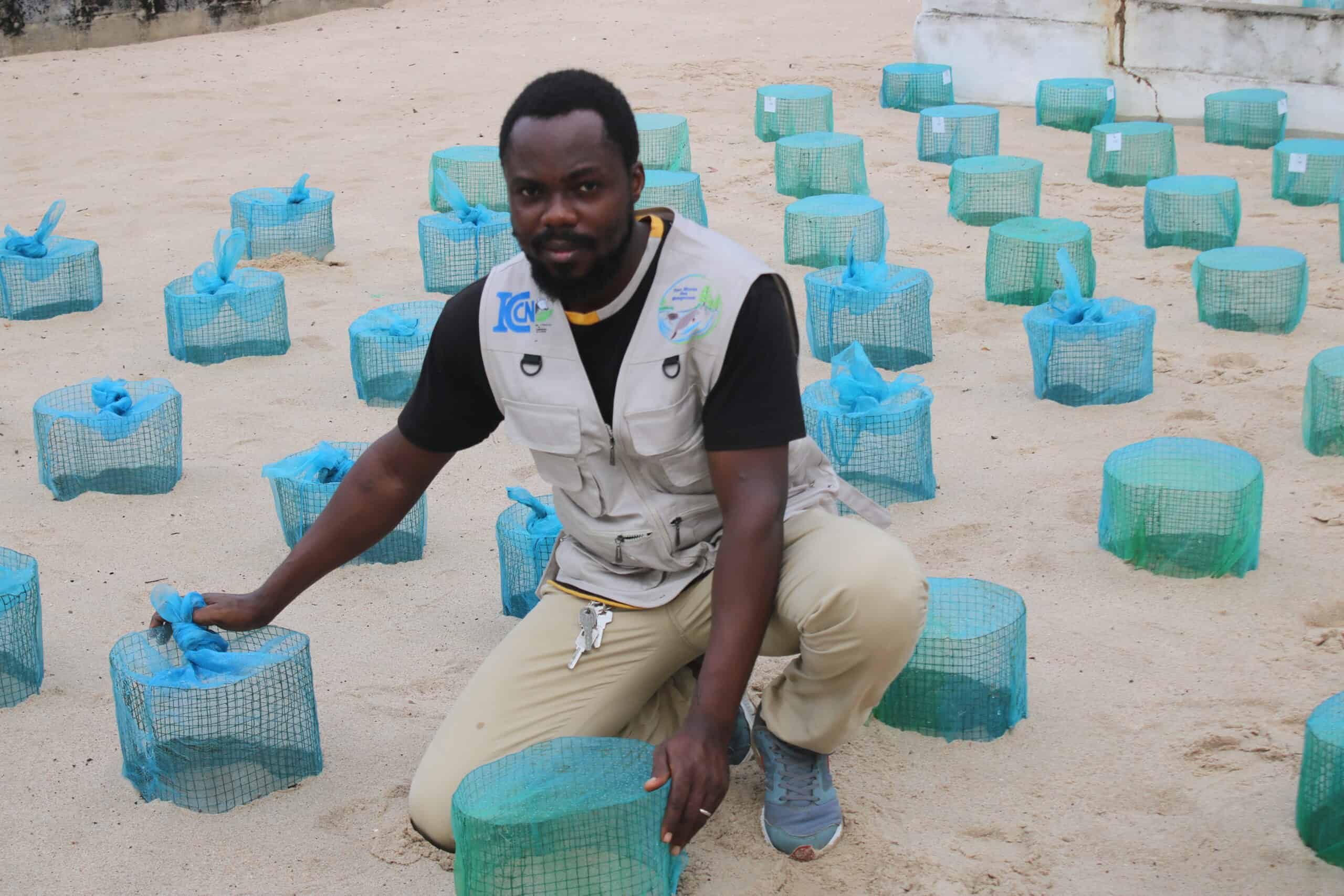
ICCN relocates sea turtle nests to a hatchery (pictured here) to protect and monitor them during development.
Safe Earth Foundation (SEF) (Nigeria) will use its SWOT grant to enhance community engagement and enforce conservation regulations to mitigate threats to nesting sea turtles in Akassa, Nigeria. Their initiatives include conducting educational workshops for local fishermen and community members to raise awareness about the importance of sea turtles, establishing patrols to monitor and protect nesting sites from poaching, and organizing coastal clean-up campaigns to improve the quality of nesting habitats.
Julieth Vanessa Tabares Polo (Colombia) will enhance leatherback turtle conservation in Playa Bobalito by implementing a detailed monitoring protocol and providing standardized research training for community monitoring projects. This work is timely due to the imminent opening of Puerto Antioquia near the nesting beaches, which threatens habitat disturbance, pollution, and increased maritime traffic. Standardized data collection will enable researchers to assess the port’s impact on the leatherback population.
Provita (Venezuela) will conduct two years of in-water studies in the Gulf of Paria to assess the neritic sea turtle population and its interactions with regional artisanal fisheries. The research will focus on species identification, sex ratios, life stages, prevalence of fibropapillomatosis, and instances of artisanal bycatch, as well as the trade of hawksbill turtle products and its impact on the population.
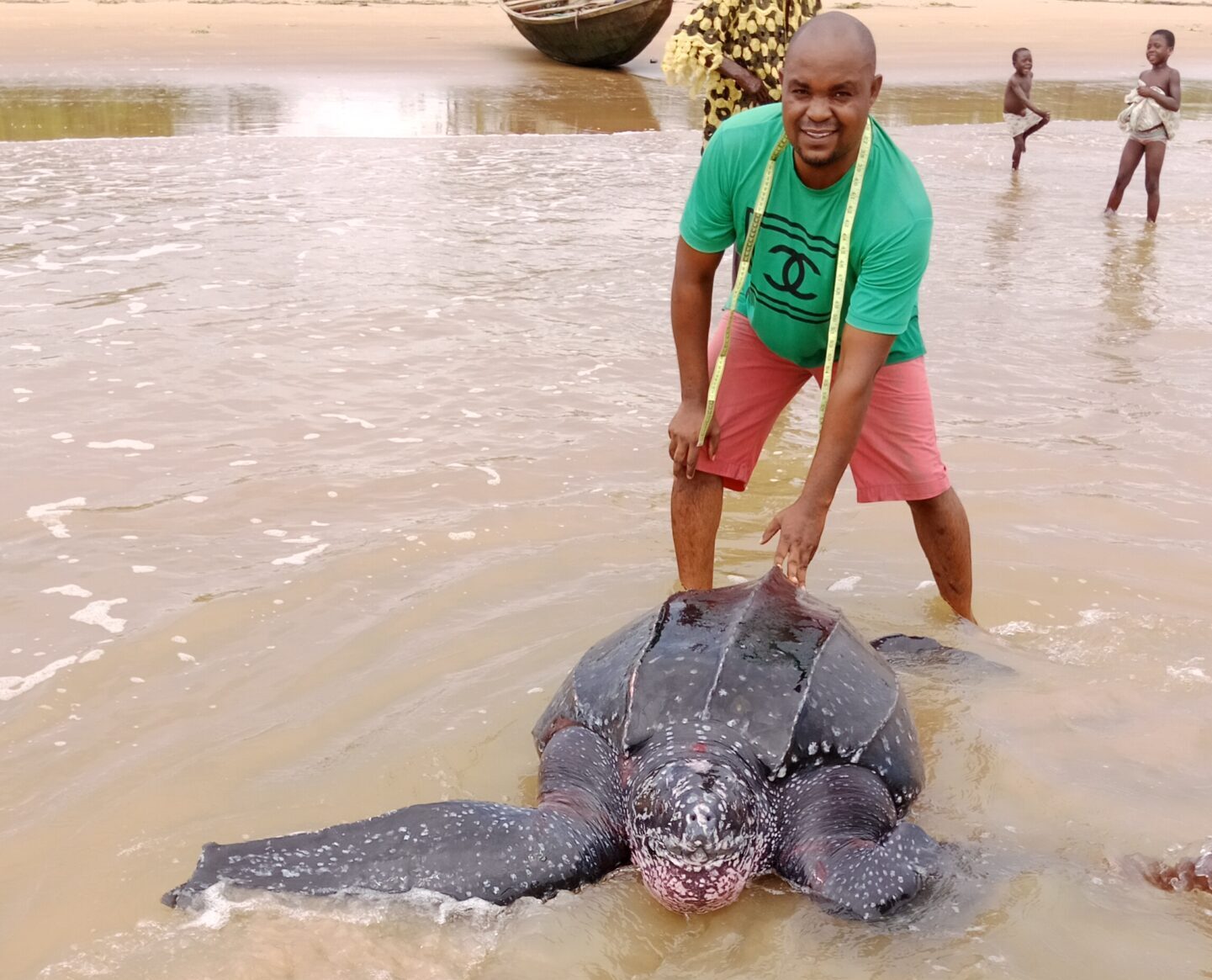
Safe Earth Foundation will use its SWOT grant to enhance community engagement and reduce threats to sea turtles in Akassa, Nigeria.
* Sos Nicaragua (Nicaragua) discovered in 2019 that all 800 sea turtle nests laid annually on Los Brasiles Island, including those of east Pacific leatherbacks, were illegally harvested due to weak law enforcement and a thriving black market. Since then, Sos Nicaragua has engaged local families by educating the children of egg harvesters and encouraging their participation in hatchling releases to raise awareness about the importance of protecting sea turtles.
* Brenda Sarahi Ramos-Rivera (Mexico) is collaborating with fishermen from the community of Punta Maldonado in Guerrero to protect sea turtle nests, reduce illegal consumption of eggs and meat, and promote beach cleanups. With her grant, she will hold environmental education workshops, including the “International Ambassadors of Sea Turtles,” for local fishermen, residents, and students to raise awareness about the importance of sea turtles.
* Turtle Island Restoration Network (TIRN) (USA) works to mitigate threats to sea turtles in Texas, including accidental fishing injuries, entanglement in debris, and boat collisions, through its “Sea Turtle Hotline.” With their grant, TIRN will expand outreach by installing new signs at key locations to encourage the public to report injured or stranded sea turtles. This initiative aims to increase timely rescues, particularly for critically endangered Kemp’s ridley sea turtles.

Campamento Tortuguero Ayotlcalli inspires a new generation of sea turtle stewards through their outreach activities.
* Yemanyá – Agua y Conservación (Ecuador) addresses the significant sea turtle conservation challenges in Esmeraldes, Ecuador, including nest predation by dogs, habitat destruction from infrastructure projects, and incidental capture by artisanal fishers. To address the issue of bycatch, Yemanyá will collaborate with fishers through environmental education and workshops to encourage turtle-friendly behaviors.
* Principia Naturae A.C. (Mexico) will organize information and training workshops for fishing cooperatives along the Michoacán coast, particularly in areas near leatherback nesting beaches. Fishermen will be educated on the impact of incidental sea turtle capture and trained in proper handling practices for turtles caught in different fishing gear, aiming to reduce the main threat to critically endangered east Pacific leatherbacks.
* JUSTSEA Foundation (Colombia) launched a project in 2016 to assess fishing interactions with east Pacific leatherbacks and promote better practices among fishers. Their research, the first of its kind in Colombia, contributed to regional assessments and publications on leatherback bycatch. A pilot project in Buenaventura will test LED lights on gillnets to reduce bycatch and improve management in areas with minimal governance.

Sea Turtle, Inc. protects sea turtle nests in a hatchery to increase the chances that the eggs will develop into hatchlings.
* Campamento Tortuguero Ayotlcalli (Mexico) will continue its efforts in Playa Blanca, Playa Larga, and Barra de Potosi (Guerrero) started in 2011, monitoring 15 km of beach with nightly patrols, relocating sea turtle nests to a hatchery, and leading monthly beach cleanups with volunteers. Educational activities will include presentations, a summer camp, and the distribution of flyers to promote responsible behavior among visitors and beach property owners.
* Sea Turtle, Inc. (USA) focuses on protecting critically endangered Kemp’s ridley sea turtles by relocating nests to a protected hatchery to mitigate risks from beach driving. In 2024, a devastating storm destroyed the hatchery and over 4,000 eggs, but the organization plans to rebuild with improved fencing. The new hatchery will remain essential to the community, with public hatchling releases inspiring ongoing conservation efforts.
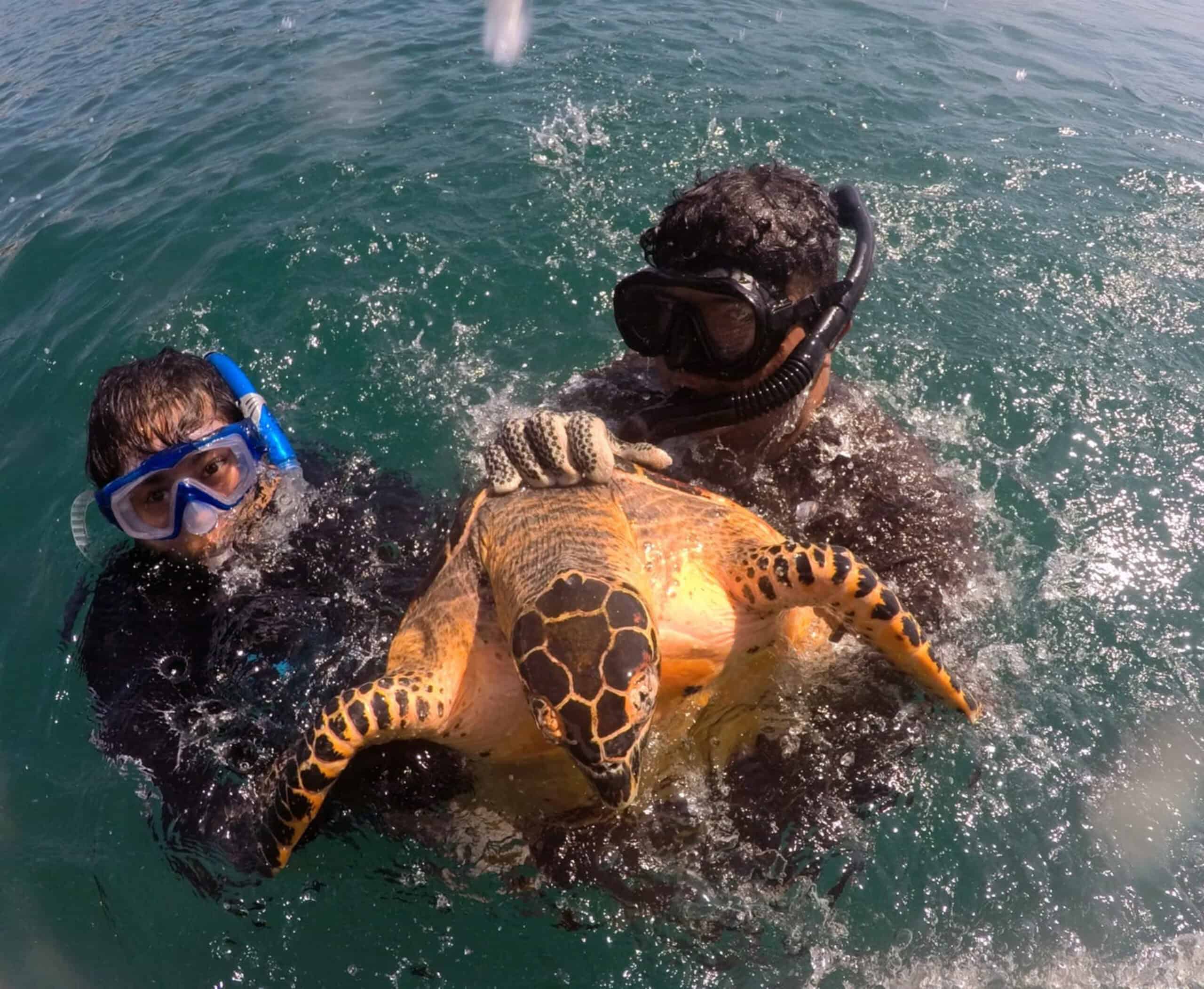
Researchers with Centro ECOMAR-UAGro capture turtles in coastal waters so they can learn about their habitat use and learn more about their lives at sea. © Centro ECOMAR-UAGro
* Centro ECOMAR-UAGro (Mexico) monitors the sea turtle population in Acapulco Bay, where hawksbill, black, olive ridley, and east Pacific leatherback turtles feed and shelter. In collaboration with diving groups and local fishermen, the project will use their grant to identify key feeding and refuge sites while also offering environmental education workshops, training for fishermen, and organizing beach cleanups.
* Facultad de Ciencias, Universidad Autónoma de San Luis Potosí (Mexico) aims to address the knowledge gap on the health of Kemp’s ridley turtles in the Gulf of Mexico. Recent studies have found that chemical contaminants, such as hydrocarbons and heavy metals, may impact the turtles’ health. This project will collect blood samples and conduct biochemical analyses to evaluate environmental stressors to target with conservation efforts.
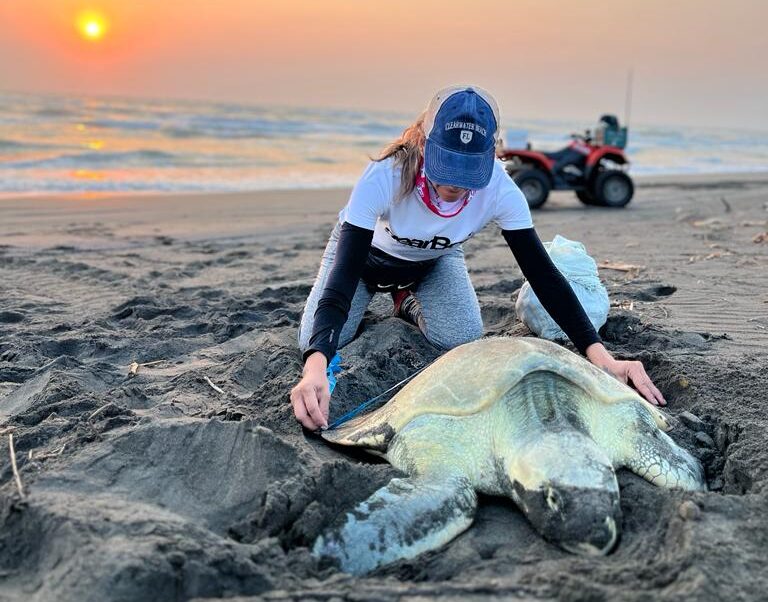
Researchers measure sea turtles’ carapaces, or shells, to understand growth rates and trends. Recently, these trends have shown the size of nesting Kemp’s ridleys is decreasing. © Facultad de Ciencias, Universidad Autónoma de San Luis Potosí
* César Paúl Ley Quiñónez (Mexico) will explore recent trends that show a decrease in the size of nesting Kemp’s ridley sea turtles at Rancho Nuevo, possibly due to earlier sexual maturity, reduced adult survival, and environmental factors. Data collected in the 2025 season will help determine if the minimum nesting size needs to be updated based on these trends.
* Mildred Alpizar Quezada (Mexico) will study the role of nesting female identity in the hatching success of leatherback turtles at Playa Tierra Colorada (Guerrero). By monitoring and tagging nesting females and collecting data on their size, incubation temperature, and hatching success, her research will explore whether smaller, first-time nesting females impact hatchling outcomes. The findings will contribute to improving conservation strategies and nesting beach protection efforts.

